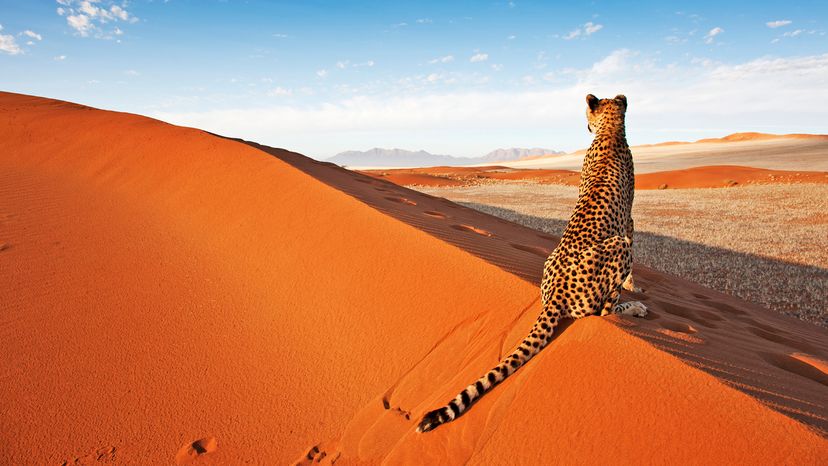Cheetahs: Social Felines in Savannahs
Cheetahs, primarily diurnal creatures, thrive in open landscapes such as savannahs and grasslands where their exceptional speed can be fully utilized in the hunt. These solitary cats prefer habitats that allow for clear visibility and space to reach their high speeds when pursuing prey.
While cheetahs can be found in various parts of Africa and parts of Iran, their need for vast expanses has contributed to their vulnerability, as habitat loss affects their ability to hunt effectively and inhibits their biodiversity.
Interestingly, cheetahs are more social than other big cats and may form coalitions. Females are usually more solitary, while males group together to defend territories and increase their chances of survival.
Leopards: Independent Cats at Home in Many Realms
On the opposite end of the spectrum, leopards display a remarkable adaptability to various habitats, ranging from forests and mountains to grasslands and deserts. These nocturnal predators excel in stealth, thanks to their camouflaged fur, and are adept climbers.
Leopards are solitary cats, with a strong territorial instinct, often overlapping ranges only in the case of mating.
Their ability to adapt to both forested and open environments, along with their more versatile diet, has allowed leopards to survive in areas where other big cats have struggled. This adaptability extends to their presence across sub-Saharan Africa, northeastern Africa, Central Asia, India, and China.
However, these big cats sometimes stray into less welcoming territory. For instance, the African leopard occasionally finds itself in areas where resources are scarce, forcing it to compete with other species and even nearby humans to survive.
